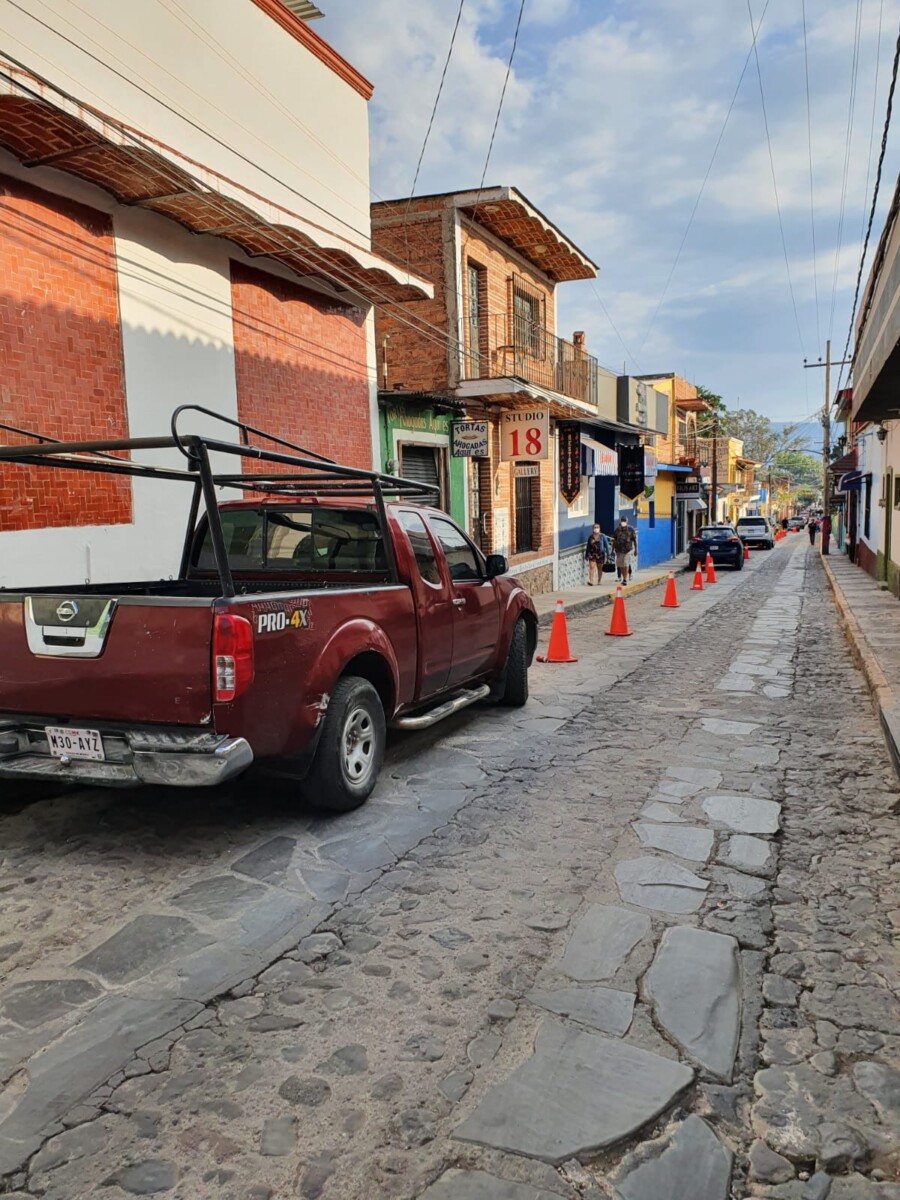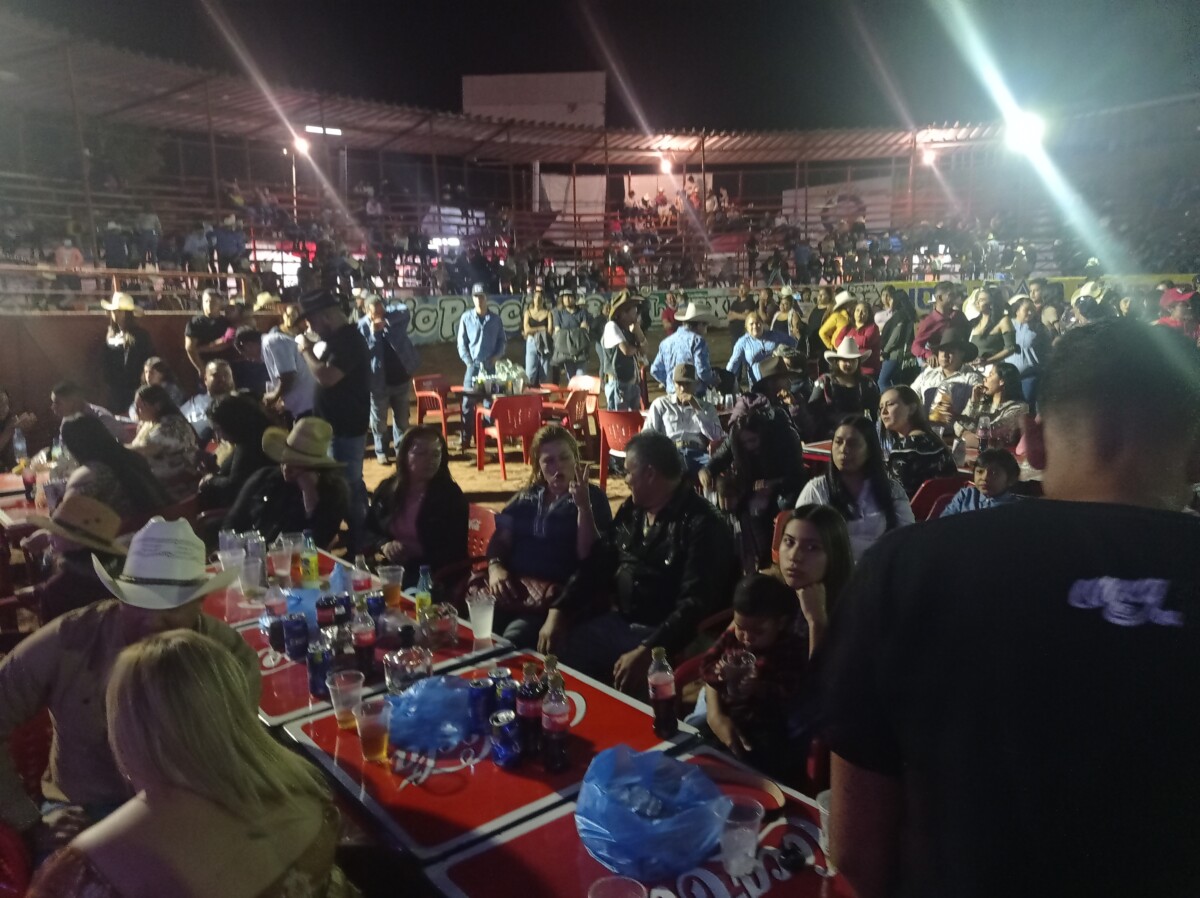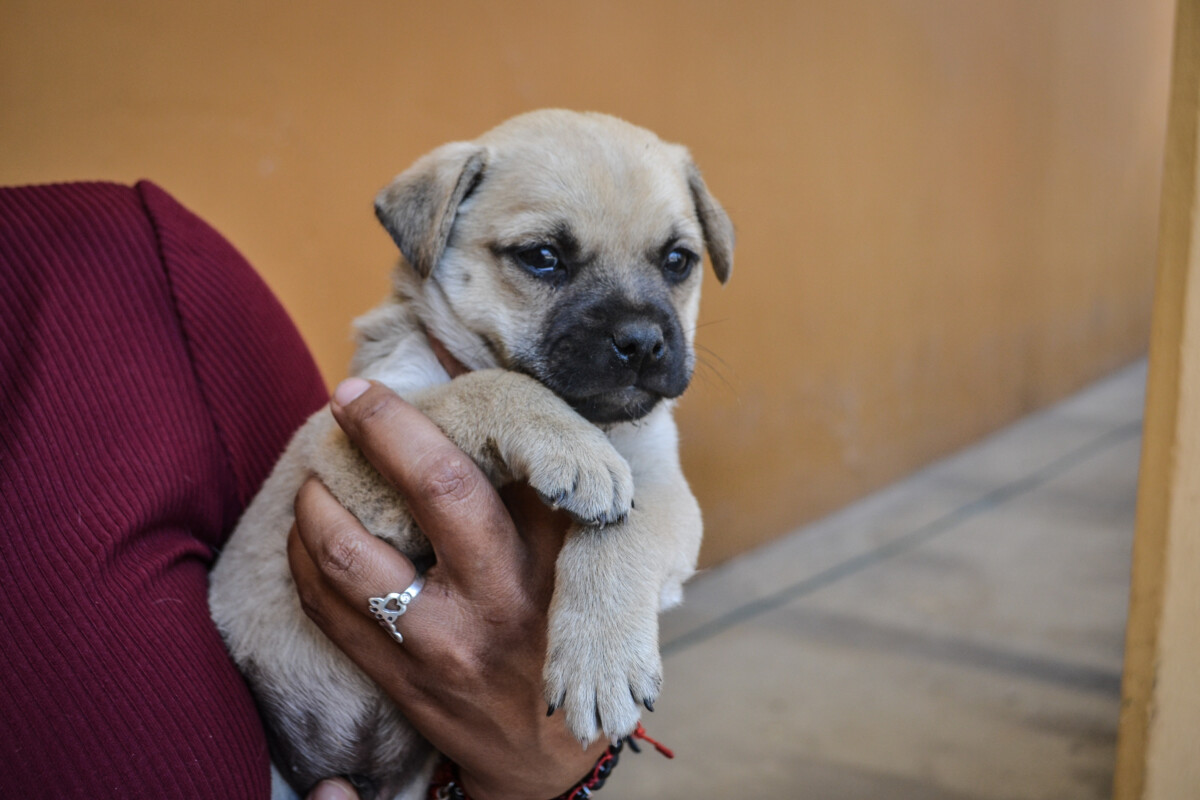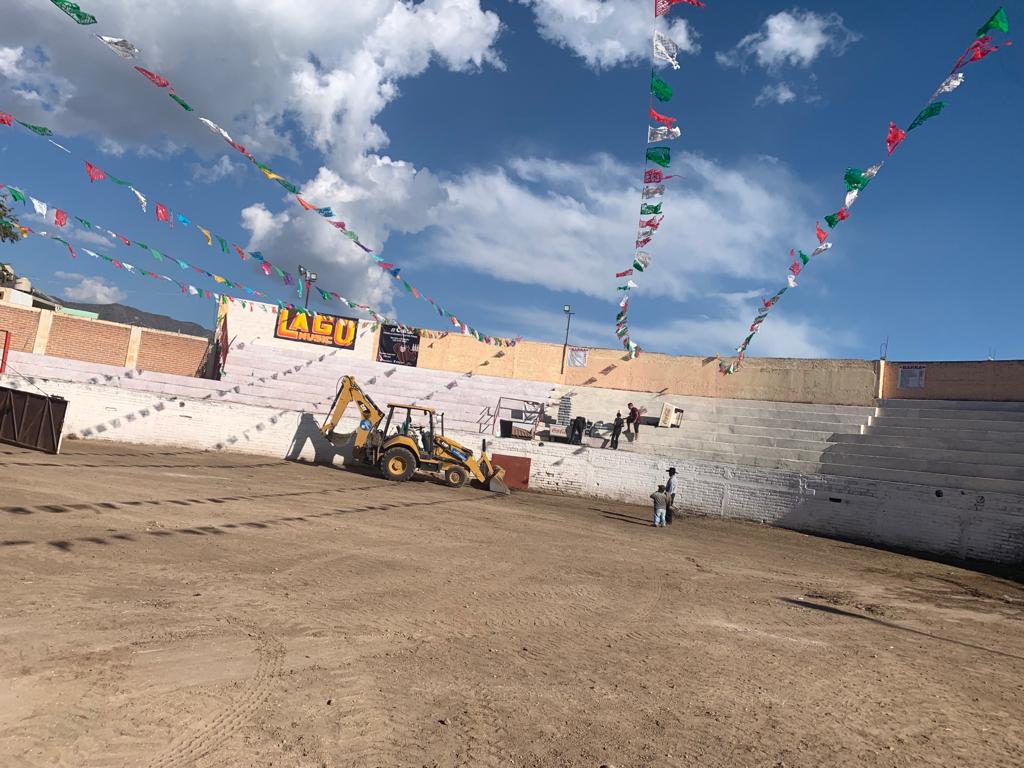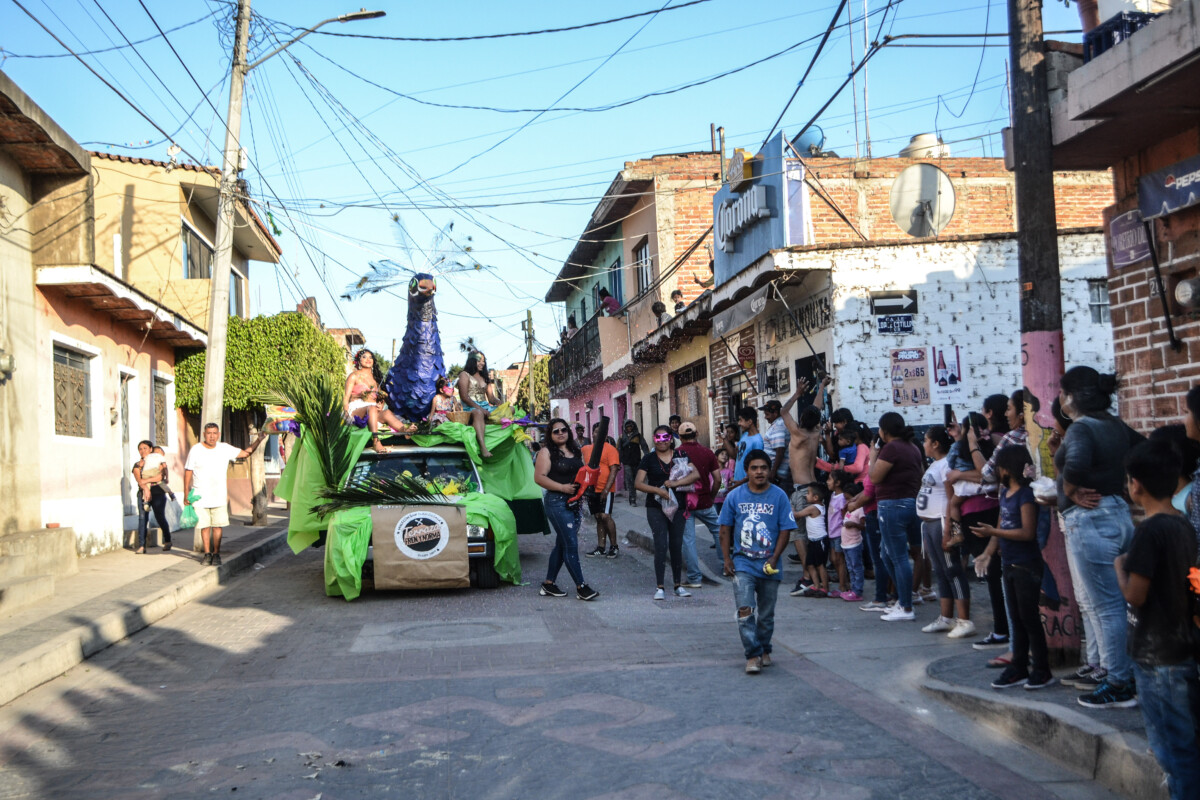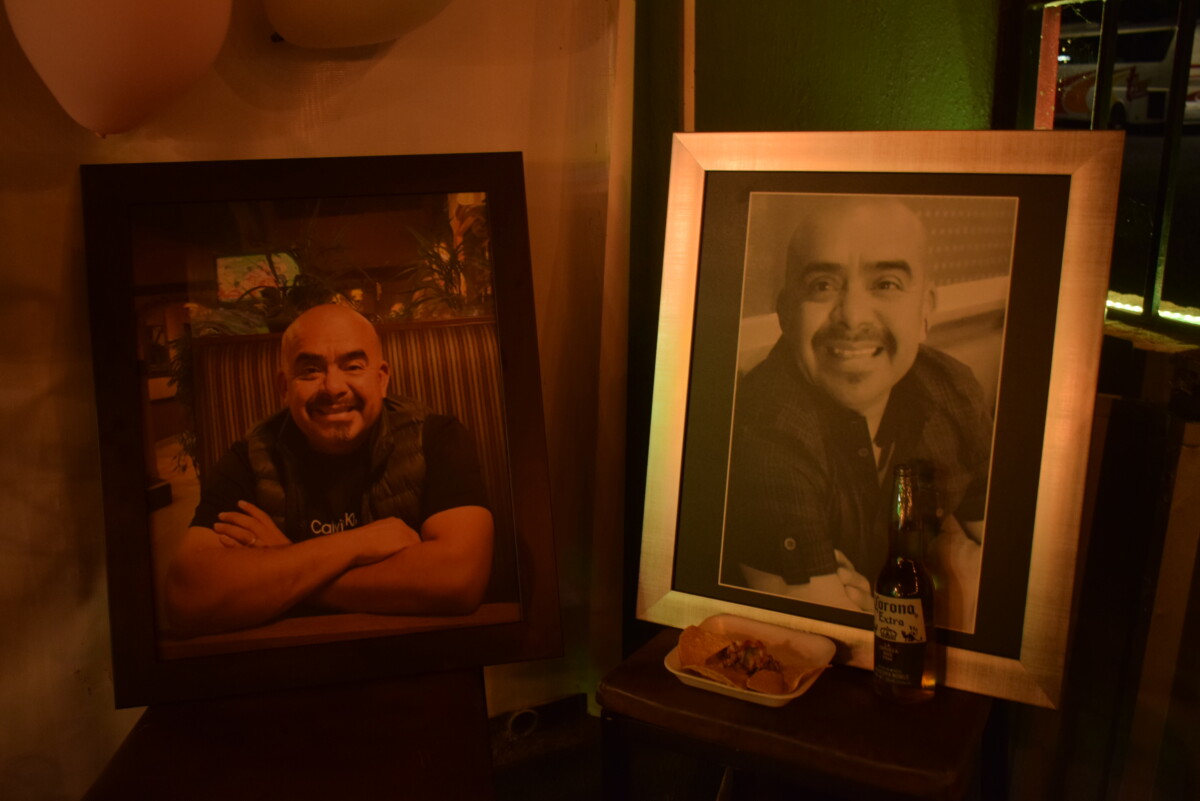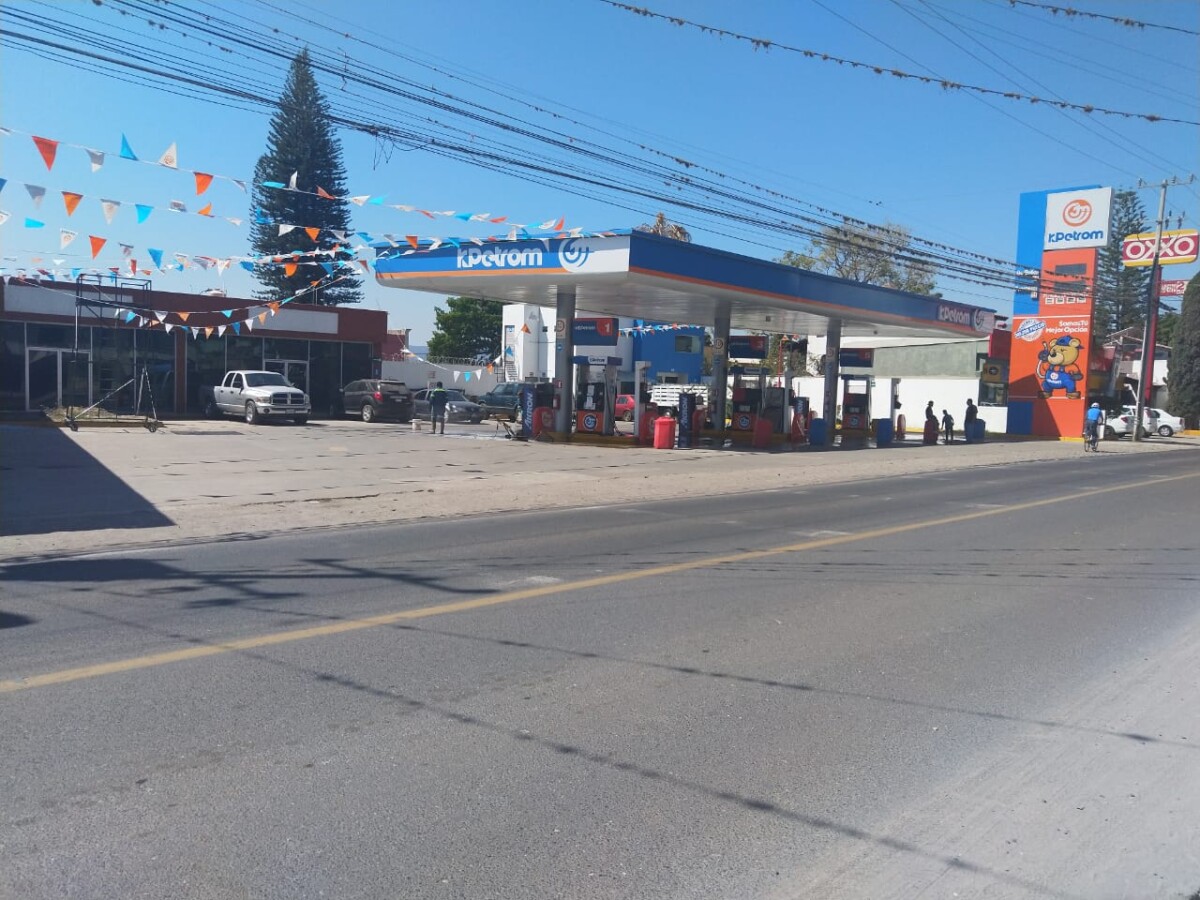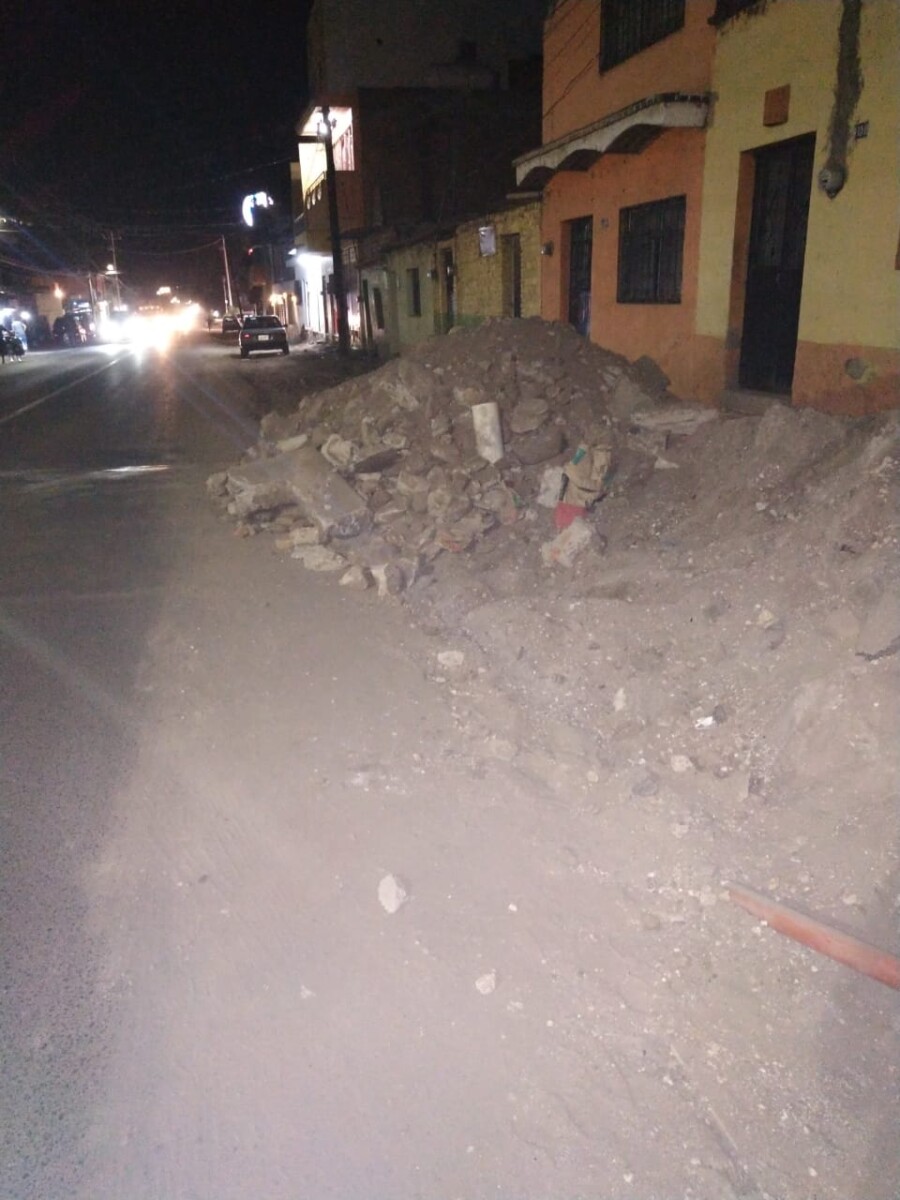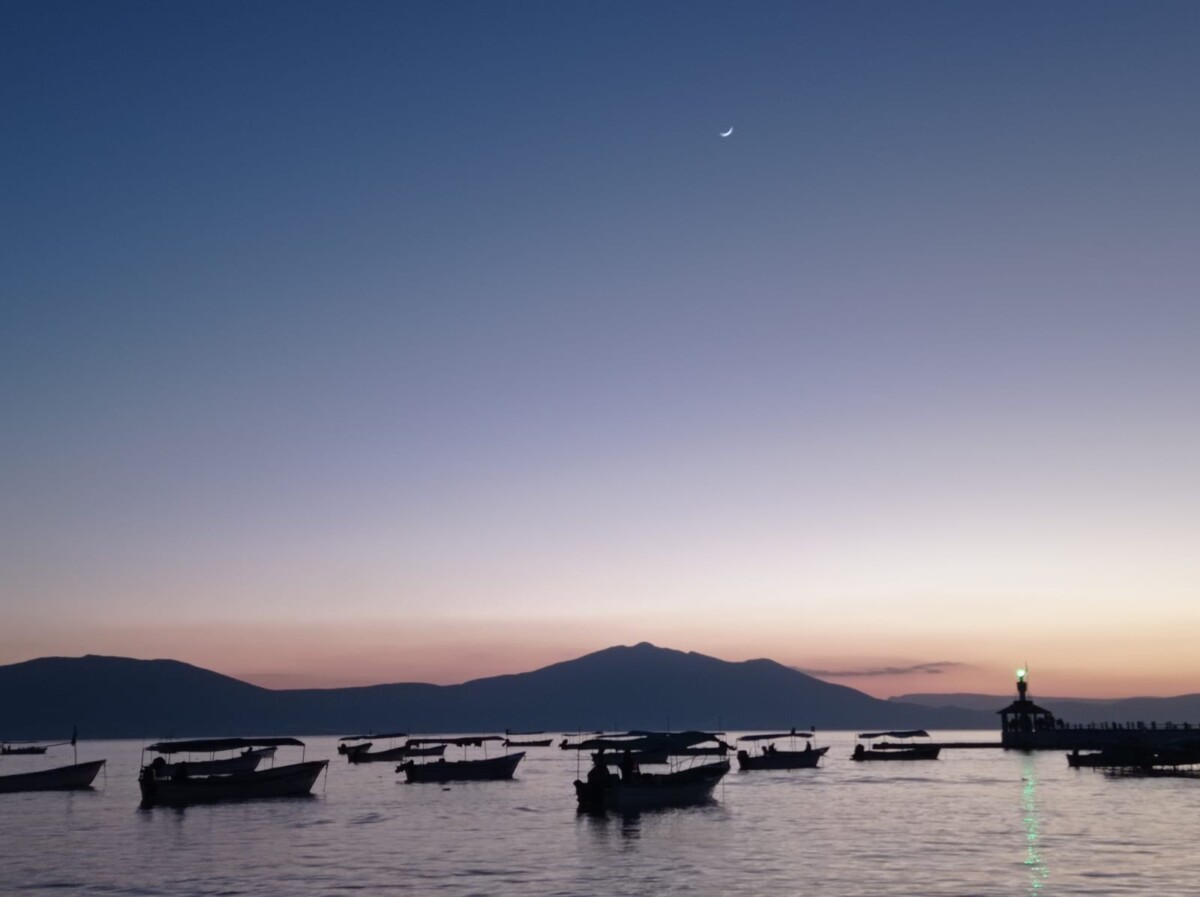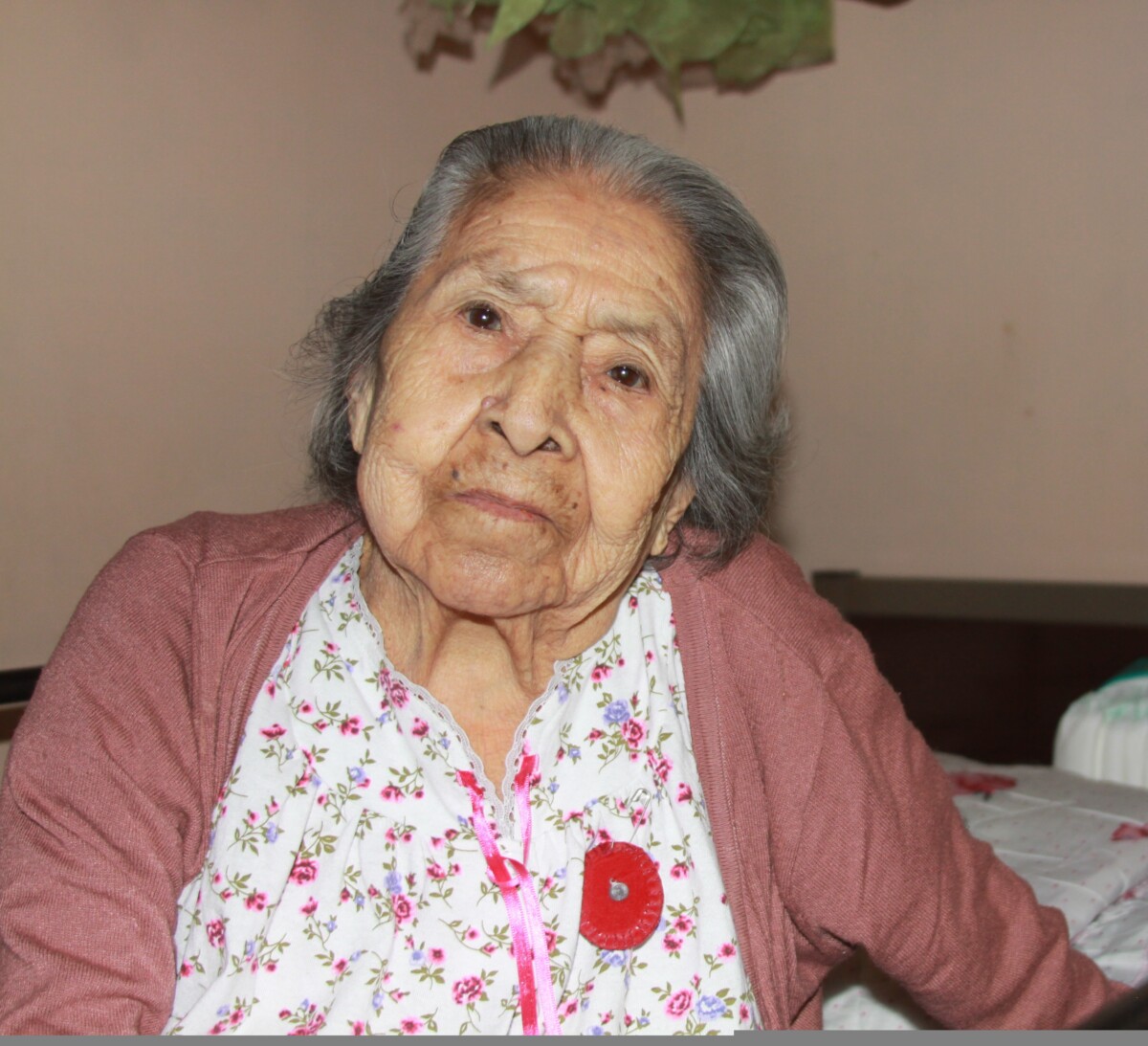en inglés
Due to lack of enforcement, pedestrian walkway on Colón Street to be reconsidered
On weekends, some drivers park their vehicles in the pedestrian walkway on Colón Street. Photo: Miguel Cerna.
Sofía Medeles (Ajijic).– Acting Ajijic Delegado Maximiliano Macías Arceo said the pedestrian zone currently set up on weekends along Calle Colón will be re-examined because it is ignored and frequently illegally used for parking.
During weekends it is common to see how the walkway, which extends along Colón from the intersection with Hidalgo to the intersection with Del Paseo along the lake, is not accomplishing its purpose as it is not respected by tourists or local businesses.
Macía said that one of the main problems is the lack of traffic officers to supervise the area. The officers were helping Chapala’s tourism and speeding up the traffic on the Chapala-Jocotepec highway, at the height of Ajijic.
«At the beginning it worked very well but now it is out of control. People shamelessly move the cones and park, and since the officers are usually in the dock area they don’t notice these actions. We are going to talk to the municipal president to take the appropriate actions,» said Macías.
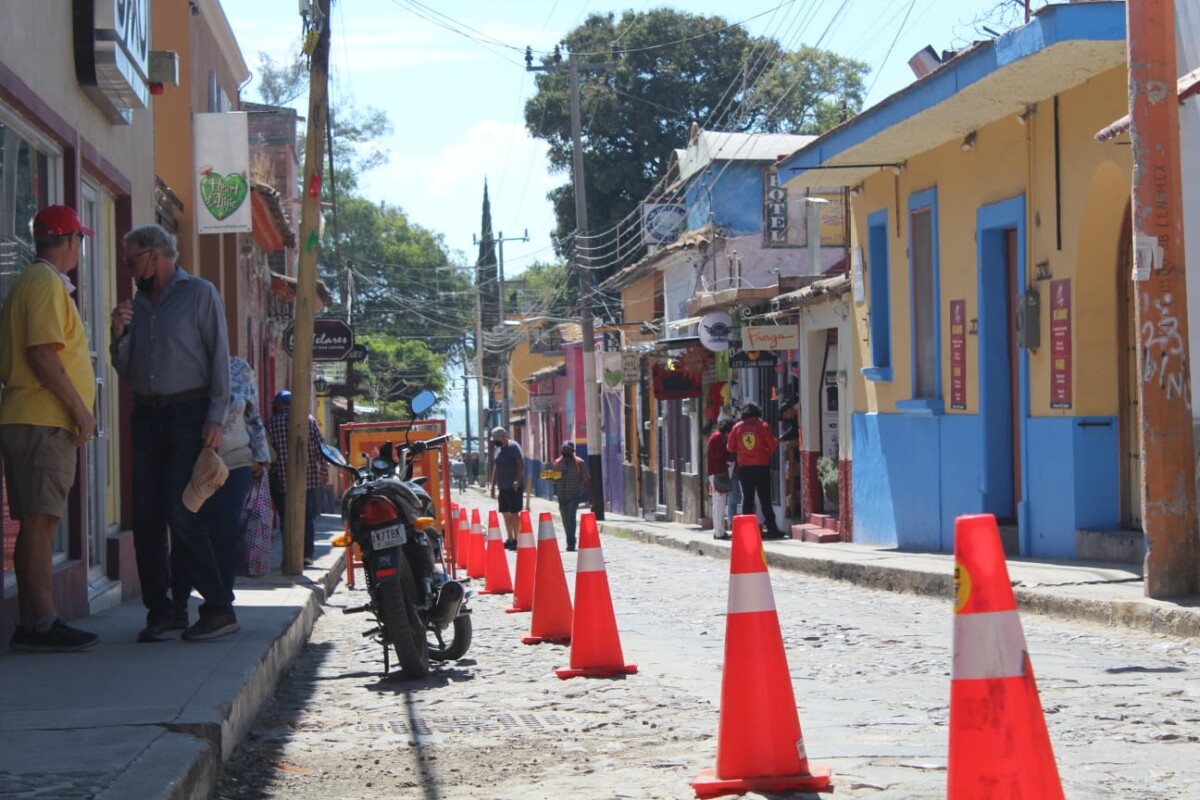
Cars, motorcycles and advertising trestles have obstructed the designated pedestrian walkway. Photo: Archive.
The interviewee commented that previously a project was being managed to place more solid but removable delimitations in the walkway. These will be delivered to the president Alejandro de Jesús Aguirre Curiel to define if the pedestrian walkway will be reconsidered or removed.
Since the installation of the pedestrian walkway on Colón Street in November 2021, there has been a weekly increase in encroachments by both motorists and businesses. In addition, Maximiliano Macias said that cones have been stolen, because of the 60 cones with which they started, to date there are approximately 45 left.
Semanario Laguna conducted interviews among the tourists who roamed the area, who said they did not know the purpose of the cones, due to the lack of signage of the walkway. Therefore, instead of using the walkway, they transit through the street to tour the downtown area of the Magic Town.
Translated by Sydney Metrick
Falls, injuries from bulls and alcohol consumption treated by firefighters at Carnival 2022
Most people were treated at the Charro events. Lienzo Charro de Chapala during the coronation night of the 2022 Carnival Queen, Feb. 26.
Editor. – Civil Protection and Firefighters of Chapala treated at least 10 people during the Carnival celebration in the municipality of Chapala. The main venues were the municipal seat, the Delegation of Ajijic and Atotonilquillo.
From Feb. 26 to March 1, pre-hospital care was provided in the “lienzos charros” or rodeo rings. Most of the problems firefighters handled resulted from falls, alcohol ingestion and injuries to riders who participated in bull events.
In Chapala
On Friday, Feb. 26, a 20-year-old woman was treated after falling from a height of three meters during the charro event at the Lienzo Charro J. Jesús González Gallo. A 21-year-old woman was treated on Allende Street for an alcohol-related issue, and a 17-year-old girl was treated for an apparent headache.
A 7-year-old boy was taken for evaluation after a fall at the Chapala charro ring on Sunday, Feb. 27. There were 300 people in the place according to Civil Protection estimates and the boy’s grandmother took him to the Red Cross for further treatment.
In Ajijic
A 27-year-old man from San Juan Tecomatlán, municipality of Poncitlán, was hit by a bull during a bull event at the Ajijic charro ring on Monday, Feb. 28. The result was a slight injury to his lips. Civil Protection and Fire Department of Chapala personnel treated him and gave him some recommendations. In the same event, a 25-year-old man from the same town was dragged by the horse he was riding. Firefighters checked him and gave him some recommendations.
On Tuesday, March 1, in the same location, a 23-year-old rider needed stitches due to an injury near the lower part of the abdomen. Although the report does not clarify the size of the wound, nor what caused it, his relatives took him for further treatment. In the same bull handling event, a 27-year-old man from San Juan Tecomatlán, municipality of Poncitlán, was treated for a wound caused by a bull. No details were specified in the report.
In Antotonilquillo
A 43-year-old man who was convulsing was attended by Chapala firefighters in the Lienzo Charro of Atotonilquillo during a charro event on Monday, Feb. 28. The man, from the town of San Miguel Zapotitlán, had his vital signs taken and was given recommendations. Firefighters also treated a 22-year-old rider who attended the charro show in the Atotonilquillo delegation and was injured by a bull on the right side of his head.
Translated by Mike Rogers
Jocotopec Animal Protection rescues puppies
Abandoned puppies rescued in Jocotepec
Héctor Ruiz Mejía (Jocotepec).- Last week, personnel from the Jocotepec Animal Protection and Dignified Treatment Department carried out a rescue operation to help a puppy that had been tied up and abandoned. Martha Gabriela Camarena Sánchez, head of the agency, assured the public that the unit was able to find those responsible and remove the animal, which was in a bad state.
To her surprise, upon arrival at the scene where the puppy was reported to be located, they found at least six pug cross breed puppies. In the following days, they will be put up for adoption to responsible people who seek to provide them with a home and affection.
Translated by Rebecca Zittle
Jocotepec communal land owners protest inability to use heavy equipment
Héctor Ruiz Mejía (Jocotepec).- The owners of communal or rural “ejido” land have complained that the City Council has hoarded the heavy machinery granted to the municipality of Jocotepec by the State of Jalisco to promote rural development. The protesters, who preferred to remain anonymous, said that the program formerly known as «SAGARPA Modules» and now renamed «A Toda Máquina» or “Full Speed Ahead” has been utilized mainly for governmental public works projects within the town, but not in the communal lands.
Although an agreement had been previously signed between the ejido landowners and the Municipality to be able to make use of the heavy equipment when it is not in use by the city, the farmers have not been able to utilize it.
«They told us that the equipment has been in use since March, that they cannot lend it to us until July, but in July the rains are coming and we will not be able to work in anything but pure mud,» added one of the ejidatarios. They added that the machinery is incomplete and that, despite the fact that the program is «free,» they have always been charged for diesel fuel.
This newspaper contacted Francisco Salazar Hernández, director of Rural Development, to confirm the report; the official was unavailable to answer.
In 2019 the municipal president of Jocotepec, José Miguel Gómez López, received from the State Government a motor-driven compactor, backhoe, vibro-compactor, excavator and dump truck by the A Toda Máquina program. The Government of Jalisco invested more than 3.6 million pesos (about US$172,000) to deliver about 641 pieces of heavy equipment machinery to 121 municipalities in the state
Because this program was created with the intention of promoting rural development, the rural ejido landowners have demanded access to the machinery.
Translated by MaryAnne Marble
San Juan Cosalá celebrates its first Confetti, Magic and Fun Festival
Carnival Confetti, Magic & Fun on its way down Porfirio Díaz street. Photo: Héctor Ruiz.
Héctor Ruiz Mejía (Jocotepec).- The first edition of the carnival «Confetti, Magic and Fun» was celebrated in San Juan Cosalá, in the municipality of Jocotepec.
In spite of some technical failures, floats that could not be presented and more than half an hour of delay, the parade in which more than 200 people participated, among them around 150 children, started at around 5:00 in the afternoon from Cardenal Sur Street.
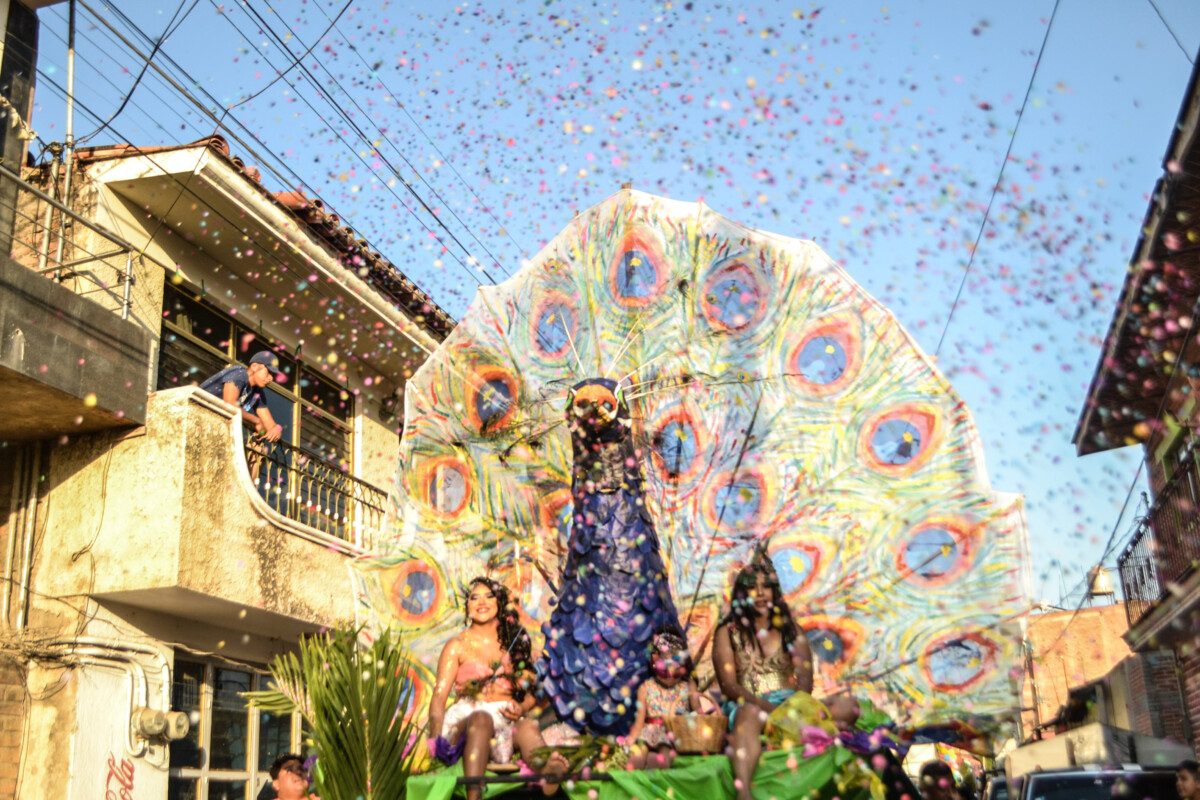
The main float of the parade ornamented as a peacock, from which confetti was flying. Photo: Héctor Ruiz.
The contingent went through the main streets of the town to culminate in the main square on Porfirio Diaz. The parade offered about half an hour of laughter, colors and music, but, above all, a sense of calm.
According to its organizers, this new version of the Shrove Tuesday parade was created with the intention of allowing people to have a good time with their families, without the fear of being covered with flour, as there are always disagreements among the inhabitants about this custom.
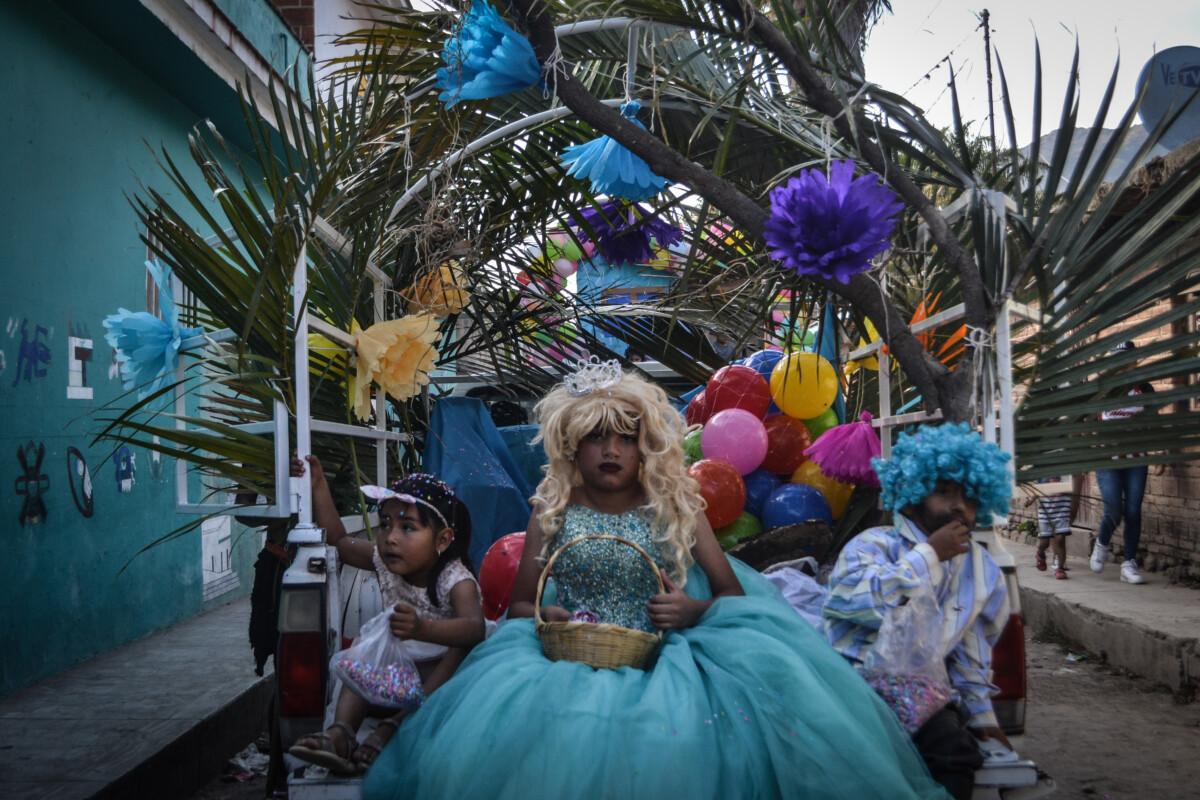
One of the parade floats
«I thought this was a very good idea, the truth is that I didn’t like to attend the carnival because everyone gets covered with flour, but I think this one with confetti is a very good idea», commented Carmen López, who together with her small children enjoyed the confetti, the laughter and the traditional masked sacaya characters.
However, there were those who attended the event, who argued that the fun of the carnival is to get covered with flour, «that’s what’s cool, that’s why you come to throw flour,» said Ramón.
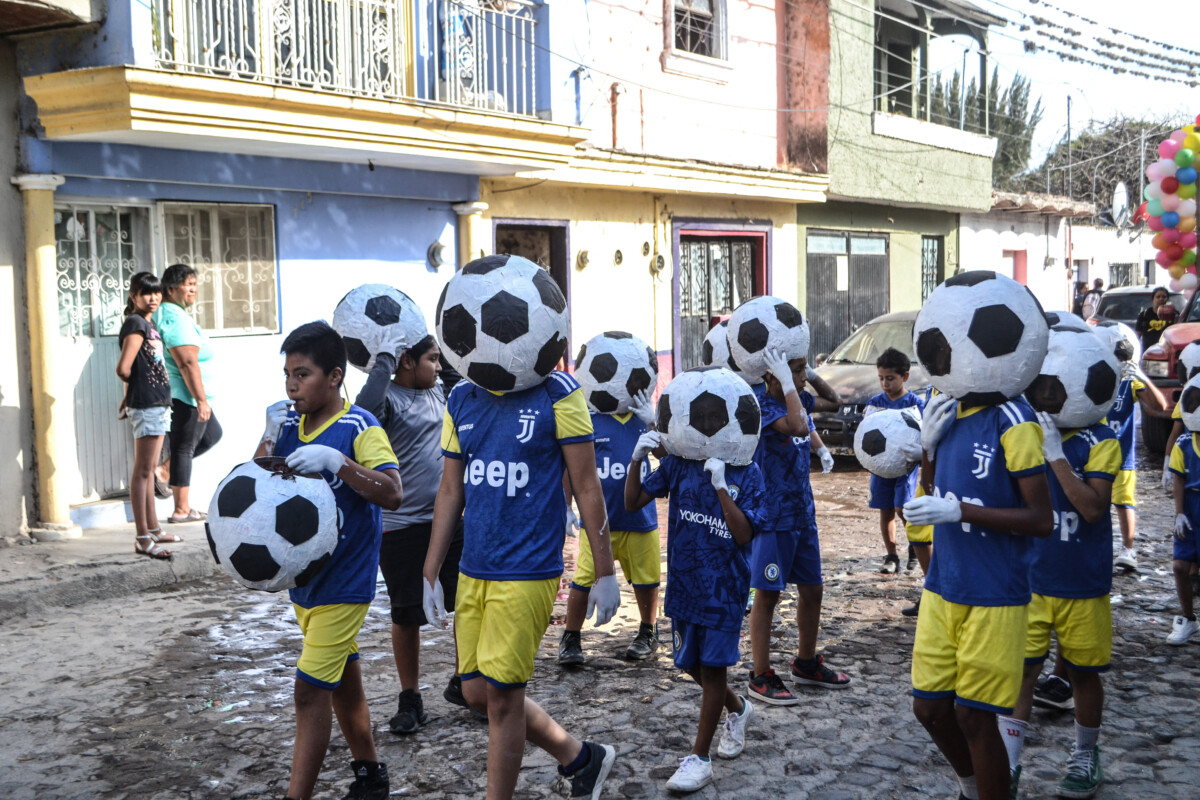
One of the soccer-themed contingents. Photo: Héctor Ruiz.
At almost the same time as the confetti parade, there was another flour parade, which registered the participation of approximately 400 people.
With a non-family atmosphere at the other parade, the fierce flour battle painted almost everyone white, including pedestrians, motorists and bicyclists traveling through the delegation.
«They floured everyone, I was just passing by in my truck and they threw all the flour at me, look how they left me,» said a passerby who was trying to get to the municipal seat, but did not count that he would arrive «looking like Gasparin (Casper the Ghost)».
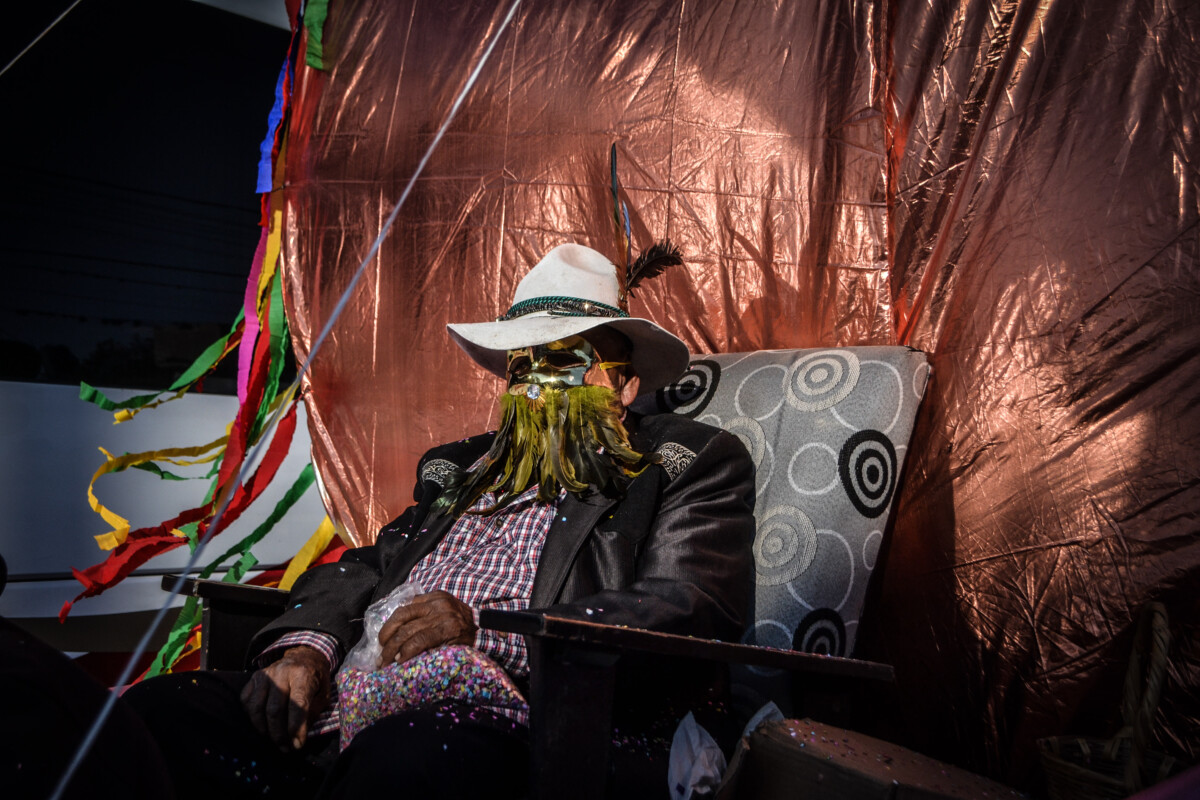
A man in costume, sitting in the cab of the pickup truck that closed the parade caravan. Photo: Héctor Ruiz.
At the end of the confetti event, its organizers said that despite the short time they had to carry out the event, it was a success; and they hope that next year it will be held again, this time with more preparation and more participants.
Translated by Kerry Watson
Jorge Luis Padilla ‘El Trokita’
A permanent altar set up by the family in memory of Jorge Luis Padilla Perales during the 50th birthday of his sister Silvia Araceli at El Toro restaurant.
Jazmín Stengel (Chapala).– Trokita was an example to follow. Jorge Luis Padilla Perales, 1970 – 2021, better known in Chapala and California as ‘El Trokita’, was and will continue to be the absent son with the most presence in his hometown. His memory was engraved forever in the Paseo de los Ausentes on February 24.
“Hijos Ausentes” or Absent Children is a time-honored tradition for children who emigrate to the US or Canada to send money back to help support their family and hometown community. The Paseo de los Ausentes is a walkway in Chapala dedicated to their honor.
Jorge Luis was the oldest of five siblings and originally from the La Purisima neighborhood in Chapala. In 1987 he left for the United States at the young age of 17, with the mission of helping his mother Margarita Perales Perez after the separation with his father Jose Luis Padilla Sanchez.
From a young age, Padilla Perales was very supportive, «he took care of his people,» recalls Sandra, the second of the siblings, to whom he was very close. Once in California, ‘El Trokita’, a nickname that has been passed down through the generations to the men of the Padilla family, dedicated his time and effort to a graphic design printing company, with which he managed to support his family.
Like most absent children, there were times when ‘El Trokita’ visited. But he «never traveled empty-handed,» his family recalled. Jorge began his altruistic work by collecting money from fellow California emigrants to support Chapala’s needy with resources.
«He organized fairs and events,» said his sister Silvia. Trokita was supportive of those in need, «he bought medicine for the sick and even bought wheelchairs,» added Sandra.
For these and many other things, such as distributing food, promoting sports and supporting the education of children, Jorge remained until his last breath as the active link between the absent children and his people, an action that earned him the love of the people of Chapala.
After his death, still unknown to the family, on November 15, 2021, Sandra dedicated a corrido (story told through song) to her brother so that everyone in Chapala and California can remember him as he was. It can be found on YouTube with the title «Jorge Luis Padilla ‘El Trokita».
Sandra acknowledged that no one can match the social work that her brother was able to do to benefit the community of Chapala. But that does not mean that his legacy will be lost, «we will do our best to continue his mission, each one in the best way we can,» she said.
Following the death of ‘El Trokita’, the Government of Chapala announced Salvador Alcántar Hernández as the new Coordinator of Chapala’s Absent Children on February 24. The same day the black granite plaque honoring the memory of Jorge Luis Padilla Perales was placed in the Paseo de los Ausentes next to Chapala’s main square.
Translated by Christalle Dalsted
Due to workers’ strike, gas station is closed in San Juan Cosalá
Alma Serrano.– Since February 11, the «KPetrom» gas station, located on the Chapala-Jocotepec highway, at the crossroads of San Juan Cosalá, has been out of service, due to a workers’ strike for breach of contract.
According to the notice placed on the dispensing machines, the union of workers and employees in the commerce branch in the state of Jalisco stated that, by agreement of the extraordinary general assembly, all the workers belonging to the company have agreed to call a strike in compliance with the demands of articles 920, 18, 782, 827, 921 of the Federal Labor Law.
The owners are Bransle, S. de R.L. de C.V., which is in the business of the purchase, sale, and distribution of diesel gasoline, with service station number E11757 and permit number PL/9296/EXP/ES/2015. The legal representative is José Carlos Martín Gonzáles.
Translated by Colleen Beery
Construction of bike path snarls traffic in San Juan Cosalá
Heavy machines in the area sometimes block one of the lanes of the road causing traffic. Photo by: Alma Serrano.
Alma Serrano (San Juan Cosalá).– Construction on the bicycle lane on the Chapala-Jocotepec carretera, in San Juan Cosalá has caused difficulty for both motorists and pedestrians.
Dump trucks and cement mixers are having to enter the car traffic lanes periodically, blocking the already busy road. Pedestrians are also facing obstacles, as there is little space to walk along the edge. Construction debris generated by the work is not always removed at the end of the workday.
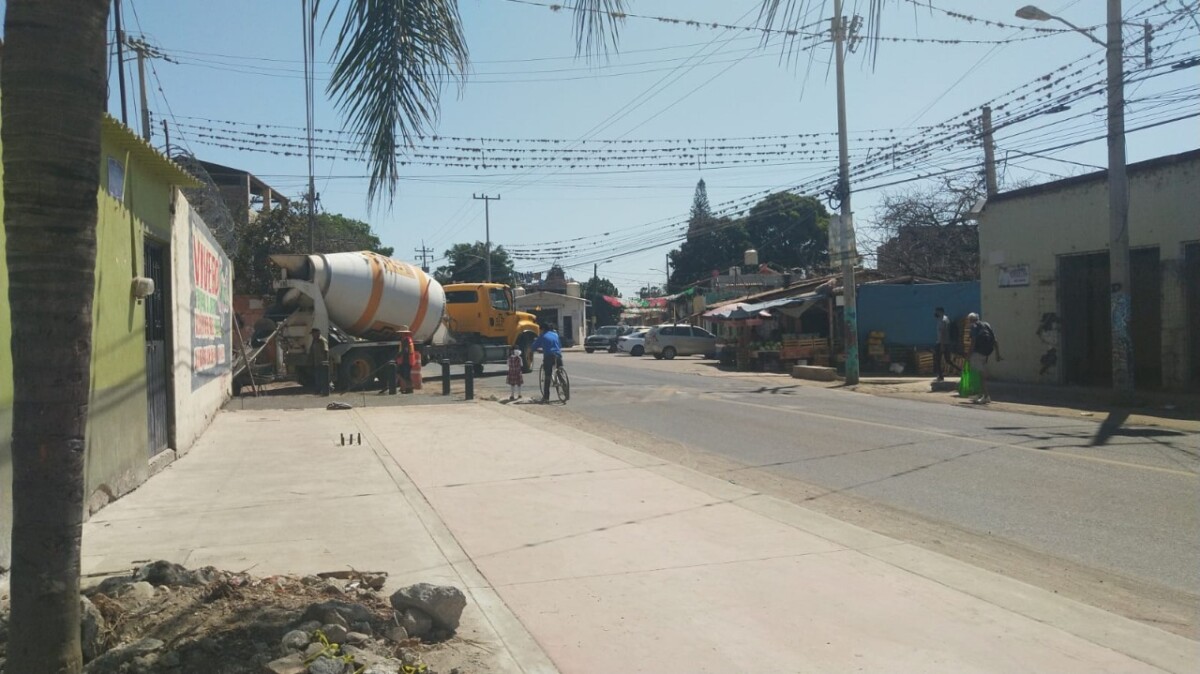
The debris generated by the work makes pedestrian traffic difficult because it blocks space on the left on the side of the road. Photo by: Alma Serrano.
In addition, exposed wires, unmarked excavations, and construction tools are left out; the area is dangerous for pedestrians and cyclists, especially at night. «It is not good that they leave debris on the road because accidents happen, especially at night,» commented a resident.
According to information from the Jalisco Ministry of Infrastructure and Public Works (SIOP), the San Juan Cosalá section of the bike path is 85% complete, and is expected to be finished by the end of March.
Translated by Amy Esperanto
Lake Chapala down 36 centimeters
Mexico’s largest lake has lost 36 centimeters (about 14 inches) so far during the dry season. Photo: Archive.
So far in the dry season, Lake Chapala has lost 36 centimeters, and is down to 95.75 centimeters, 71 percent of its capacity, according to the National Water Commission (CONAGUA).
Lakeside Chronicles
Francisca Lomelí Rodríguez is 96 years old and has retained all her vivid memories that describe the San Cristóbal of her childhood. Photo by: María Reynozo.
By: María del Refugio Reynozo Medina
Francisca Lomelí was orphaned at the age of eight. School was her life. In the San Cristóbal Zapotitlán of her childhood, classes only went up to third grade. She attended school and she remembers the name of her teacher, Trina.
The school was made of adobe and reed. It was not surrounded by a wall, but by a “wall” of huizaches and nopales (native trees and cactus). In addition to learning how to read, the girls learned how to sew and embroider napkins. They spent a lot of time at school because at noon they went home for lunch and then returned to continue the afternoon’s classes. At the end of the school year, the municipal president, accompanied by the town delegate, would go to see the students’ final work. The teachers would place a sample of the student’s embroidered napkins on display.
Corporal punishment was given by wooden ruler. When students did not finish their homework, they were given a few slaps of the ruler.
The teacher wrote lessons in chalk on a blackboard, using a cloth as an eraser. There were no notebooks. The students would buy a sheet of brown paper and tear it into four parts, and when the pages were worn out on both sides, they would buy another sheet.
Francisca remembers the delegate of that time, Beatriz Chavez’s father. He used to openly carry a gun every day. He was a man who was respected. He paid to have a cobblestone pavement installed in town. Despite looking different today, the plaza was the place to go for prominades and serenades.
Chica, as Francisca is known to the townspeople, remembers the nights of music and the women and men milling around. Some women would carry a “chiquihuite” or palm basket with flowers from their garden and sell them for pennies. It used to be very common for there to be fights on holidays. Men would go around armed with guns or knives. Sometimes as many as three or four people were killed, who were left lying around while the aggressor escaped, as there were no police as there are now. The police, who sometimes appeared, were called «Los Charros» by the people.
The women were guarded carefully by their male siblings and parents, although some, when there were weddings, carried a bottle of punch and danced to the music of the harp.
-We waltzed,» they would say.
Chica remembers “El Vapor,” which was a very large boat that came from Chapala. In the morning, very early, it arrived for the passengers and returned in the afternoon. On its journey over the waves of the waters of Chapala, El Vapor, emitted a high-pitched noise that reached the ears of the locals. It was a strange noise, like in the famous song «La Llorona,» the locals said.
People would come to the shore in the morning to say goodbye to their relatives and watch the boat floating in the water, until it was gone from view. In the afternoon, they would also come to the shore to receive the passengers, who came loaded with packages from errands in Chapala.
The steamboat was the only way out, since there was no highway around the lake in those times. The first streets that were made were called caminos. Everything was surrounded by mountains, so it was difficult traveling over them.
In town of San Cristobal, there was not much to buy. There was a store owned by Arnulfo and Lola Aceves. Everything could be bought by centavos: a centavo of butter, a centavo of salt, a centavo of cheese.
Another man was called Tacho. He sold meat, but not every day. When he was going to slaughter an animal, he would announce himself by standing in the middle of the street rubbing his knives against each other. The sound could be heard for many blocks and people knew that there would be fresh meat that day.
“Tacho is sharpening his knives,» people would think, and they would prepare to go shopping. Pigs and chickens were raised in the houses. On special days people would slaughter the pigs that they had raised. Chica remembers the whiteness of the lard and the smell of pork rinds from the houses, as there is no other smell like it. The pigs roamed the streets and none of them got lost. They could roam all day long and return home in the evening to sleep. Sometimes the sows were heavily pregnant and returned home, accompanied by the piglets walking alongside their mother. The chickens were also on the loose, going to and from their homes.
The water of the lagoon was so clean that the people could drink it. The townspeople went with pitchers to bring it back in order to prepare food and also to drink. Chica remembers that her grandfather had some beehives and extracted a lot of honey from them. He would invite the neighbors to bring a small pot to share his honey with them.
There was an «old boy» (that’s what they called him because he never married), but he was a older man. He sold bread in town.
The church was an old building, made of adobe and tile. Father Prisciliano Michel contributed to its improvement. Chica remembers, when she was a child, that after mass they would bring sand from the cemetery. Everyone cooperated, young and old, with whatever they could, and if they could bring a brick, they contributed.
The villagers contributed to the construction of the temple. There was a lot of religious fervor during Holy Week, remember that the women only made hats until Wednesday because Thursday, Friday and Saturday were days of mourning and fasting. The images hanging on the walls were covered with purple cloth as a sign of mourning. No music was played, and many went to church on their knees in the street. Nor did people ride horses; if they passed a cross, they crossed themselves with reverence and the men took off their hats.
In the town there was no Health Center; Daniel Cervantes was everyone’s doctor, he gave injections, he was very good at curing people. Then a doctor Ureña started to come, and another one was called Dr. Cuervo.
From her bed, Francisca continues talking about her childhood and youth.
It was nice,» she says with a smile.
When I ask her about her husband, she says:
“He was my first and last boyfriend.”
José Reynoso and she never talked, they shortened the distance with messages sent through friends, or with José’s whistles from the street informing her that he had been near. On some occasions her friend Margarita Solano, warned her.
-Chirin, chirin!
She would exclaim from the door and Chica would come out to greet her and raise her hand, while behind her friend’s back, Jose would return her greeting from a distance.
Translated by Colleen Beery
© 2016. Todos los derechos reservados. Semanario de la Ribera de Chapala
